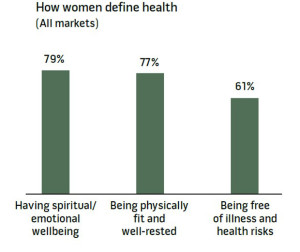 Spring is my favorite season. Warmer weather, budding flowers and lots of greenery in yards, gardens and parks encourages outside activities and fills me with energy. The spring season also brings out lots of crawling and flying critters like bees, butterflies, and hummingbirds, as well as some of the more unpleasant pests like ticks and mosquitos. If you enjoy spending time outside like I do, hiking, gardening or walking the dog, be aware that ticks and their bites can be not only annoying, but dangerous.
Spring is my favorite season. Warmer weather, budding flowers and lots of greenery in yards, gardens and parks encourages outside activities and fills me with energy. The spring season also brings out lots of crawling and flying critters like bees, butterflies, and hummingbirds, as well as some of the more unpleasant pests like ticks and mosquitos. If you enjoy spending time outside like I do, hiking, gardening or walking the dog, be aware that ticks and their bites can be not only annoying, but dangerous.
Jana’s Experience
Jana Braden found out how dangerous tick bites can be the hard way. She enjoyed the outdoors and never gave much thought to something as minor as ticks. Jana never even realized that she had been bitten by a tick, so when her eyes began to hurt, became red and extremely inflamed her doctor thought that it was conjunctivitis. She had suffered with eye infections before, but this was different, and much worse. Without any other cause that she or her doctor could pinpoint, he treated her for conjunctivitis. After months of treatments for an eye infection, the pain continued, and in fact, worsened.
She tried to tell the doctor that she had had eye infections before and something was very wrong. He wouldn’t listen. Any light, from bright sunlight to the tiny, red light on her smoke detector caused excruciating pain. “It felt like an ice pick in my eye,” Jana recalled. She went to the emergency room, where the doctor on duty also told her that it was conjunctivitis and asked if she had experienced any trauma to her eye. She continued to be treated with antibiotics and steroid injections into her eye twice a week for six months. Jana went on short term disability and eventually lost her vision. She woke with such pain every day that she couldn’t work, couldn’t see and wanted to end her life, hoping each night when she went to sleep that she wouldn’t wake up to the same misery the next morning.
The Disease
Lyme disease is caused by the bacterium Borrelia burgdorferi and is transmitted to humans through the bite of an infected black-legged tick (deer tick) or western black-legged tick. Typical symptoms include fever, headache, fatigue, chills, muscle and joint aches and swollen lymph nodes and a characteristic skin rash called erythema migrans, a red, expanding rash that is look like a bull’s eye.
If left untreated, the infection can spread to the joints, the heart, and the nervous system. Lyme disease is typically diagnosed based on symptoms, physical findings (e.g., the bull’s eye rash), and the possibility of exposure to infected ticks. Laboratory testing is helpful if used correctly and performed with validated methods and most cases of Lyme disease can be treated successfully with a few weeks of antibiotics.
A major complication in the treatment of the disease is that up to one third of those who become infected do not develop the tell-tale bull’s eye rash leading doctors to treat the individual symptoms, not the underlying disease and 30{c754d8f4a6af077a182a96e5a5e47e38ce50ff83c235579d09299c097124e52d} do not recall being bitten by a tick. Jana’s experience delayed her treatment for Lyme disease by years because neither she nor her doctors linked her eye infections and pain to a tick bite. Many doctors often do not test for Lyme disease because it is known as the Great Imitator, looking like many other diseases, leaving it to worsen unchecked and cause further, sometimes permanent, organ damage and symptoms that last for months or years. In Jana’s experience, doctors didn’t want to test for the disease because treating it after the early localized period can be demanding and frustrating.
According to Dr. Richard Horowitz, author of Why Can’t I Get Better? Solving the Mystery of Lyme and Chronic Disease, there are multiple overlapping diseases that can cause Lyme disease to cause persistent chronic illness. “Lyme is the great imitator, and is the number one vector borne epidemic spreading throughout the world, mimicking many other diseases.” Dr. Horowitz insists that with the right testing and treatment these sufferers can get better.
Looking back, Jana realized that the time she spent working in a deer processing plant, helping to clean and mount freshly killed deer is probably the way that a tick found its way to her. The tiny deer tick may have looked like a freckle or a scab that she scratched off without knowing what it was or how the brief contact would change her life.
The Stages
Lyme disease progresses through three major stages. The first, the early localized stage, begins with the tick bite and continues through the first days and weeks of the infection. Approximately 70 to 80 percent of those infected will develop a rash at the site of the tick bite. The rash develops after a delay of 3 to 30 days after the bite, with an average of 7 days. If a rash develops, it gradually expands over a period of several days and can grow to 12 inches in diameter. Parts of the rash may clear as it enlarges resulting in the “bull’s eye” appearance. The rash usually feels warm to the touch but is rarely itchy or painful. It can appear on any area of the body. A small, bump or redness at site of tick bite that goes away in 1 to 2 days like a mosquito bite is not a sign of Lyme disease. During this first stage Lyme disease has not begun to spread throughout the body.
Treatment with antibiotics, usually a single dose or a two week course of doxycycline, at this point usually eliminates the bacteria, and the disease. Doctors will typically only treat someone for Lyme disease if a tick is visible on the body and has been there for a minimum of 36 hours, there is a positive test for the bacteria, and only 72 hours after the bite. For the majority of people this will be the end of their infection, their symptoms and the treatment.
Without treatment the disease progresses to the second or early disseminated stage. This stage, and its symptoms, can last from days to weeks after the tick bite. During the early disseminated stage the disease is beginning to spread to other parts of the body. Symptoms may include:
- Additional “bull’s eye” rashes on other areas of the body
- Facial or Bell’s palsy (loss of muscle tone on one or both sides of the face)
- Severe headaches and neck stiffness due to meningitis (inflammation of the spinal cord)
- Pain and swelling in the large joints
- Shooting pains that may interfere with sleep
- Heart palpitations and dizziness due to changes in heartbeat (Lyme carditis)
Many of these symptoms will resolve by themselves over a period of weeks to months, even without treatment, but for some sufferers lack of treatment can result in additional complications.
The third stage is the late disseminated stage during which the bacteria has spread throughout the body and can last for months, or even years, after a tick bite. Approximately 60{c754d8f4a6af077a182a96e5a5e47e38ce50ff83c235579d09299c097124e52d} of patients with an untreated infection may begin to have intermittent bouts of arthritis with severe joint pain and swelling. Large joints are most often affected, particularly the knees. This is the stage during which Jana’s chronic eye infection developed into a symptom that continues to surface 15 years after her initial infection.
Up to 5{c754d8f4a6af077a182a96e5a5e47e38ce50ff83c235579d09299c097124e52d} of untreated patients may develop chronic neurological complaints months to years after infection that include shooting pains, numbness, or tingling in the hands or feet, and problems with short-term memory.
Post-treatment Lyme Disease Syndrome or Chronic Lyme Disease
Approximately 10-20{c754d8f4a6af077a182a96e5a5e47e38ce50ff83c235579d09299c097124e52d} of patients with Lyme disease will develop symptoms that last months to years after treatment with antibiotics. While the cause of these symptoms is not known, and, according to current research, these symptoms are not due to ongoing infection with B. burgdorferi, the continued presence of symptoms is very real. This condition is referred to as Post-treatment Lyme disease syndrome (PTLDS).
There is some evidence that PTLDS is caused by an autoimmune response, in which a person’s immune system continues to respond, doing damage to the body’s tissues, even after the infection has been cleared. This is similar to other complications and “auto-immune” responses to diseases such as Camphylobactor (Guillan-Barre), Chlamydia (Reiter’s syndrome) and strep throat (rheumatic heart disease). Studies have shown that continuing antibiotic therapy is not helpful and can even be harmful for persons with PTLDS and is associated with serious complications.
Although some doctors believe that PTLDS is a lingering infection with B. burgdorferi bacteria, ultimately these patients usually need to cope with symptoms the way that they would for fibromyalgia or chronic fatigue.
Testing
The CDC currently recommends a two-step process when testing blood for evidence of antibodies against the Lyme disease bacteria. Both steps can be done using the same blood sample.
The first step uses a testing procedure called “EIA” (enzyme immunoassay) or rarely, an “IFA” (indirect immunofluorescence assay). If this first step is negative, no further testing of the specimen is recommended. But, if the first step is positive or indeterminate (sometimes called “equivocal”), then the second step should be performed. The second step uses a test called an immunoblot test, commonly, a “Western blot” test. Results are considered positive only if the EIA/IFA and the immunoblot are both positive.
The two steps of Lyme disease testing are designed to be done together and the CDC does not recommend skipping the first test and just doing the Western blot. When the immunoblot test is used properly, the CDC believes that all those with Lyme disease will test positively. It is important to be sure that your doctor does a venous blood draw and not just a finger or toe prick which may not contain the antibodies at the time of testing.
Newer genetic tests can identify the DNA of the bacteria in the blood and are very accurate. Medical literature reports that up to 75{c754d8f4a6af077a182a96e5a5e47e38ce50ff83c235579d09299c097124e52d} of patients with acute phase Lyme disease are negative for the characteristic antibodies which delays detection and treatment. DNA tests can accurately and quickly identify the disease allowing a prompt response to the disease.
If you discover that you have Lyme disease and you continue to suffer after treatment with antibiotics some of the following may help with PTLDS:
- Check with your doctor to make sure that Lyme disease is not the only thing affecting your health.
- Become well-informed. Learn how to sort through the maze of information on the internet because much of it is inaccurate.
- Track your symptoms. It can be helpful to keep a diary of your symptoms, sleep patterns, diet, and exercise to see how these influence your well-being.
- Maintain a healthy diet and get plenty of rest.
- Share your feelings. As with any illness, Lyme disease can affect you and your loved ones. Your symptoms are real and it may help to talk with a counselor who can suggest ways of managing your life during this difficult time.
In 2013 there were approximately 36,000 cases of Lyme disease reported, with 27,000 confirmed and 6,000 probable cases. Preventing the disease is key to avoiding possible long-term complications. Steps to prevent Lyme disease include using insect repellent, removing ticks promptly, applying pesticides, and reducing the local tick habitat. The ticks that transmit Lyme disease can also transmit other tick-borne diseases, including tick-borne relapsing fever, syphilis, anaplasmosis (granulocytic ehrlichiosis), Leptospirosis, autoimmune disorders like lupus, bacterial endocarditis, H. pylori, Epstein Barr virus, or Treponema denticola (bacteria found in the mouth).
The Journey Continues
Jana Braden’s journey has been a long, difficult one. She will never be completely rid of the complications of Lyme disease, but she finally found a doctor who believed her and recognized her chronic eye infection for what is was, iritis (infection of the retina) caused by Lyme disease that had spread in her body. Within a week of beginning antibiotic treatment with doxycycline, her symptoms went away. She could see again. She could work and she was finally pain free! Jana also realized that her diet was contributing to her disease and she eliminated sugar from her meals. The sugar in her diet was feeding the bacteria and keeping it alive and well in her body. Her new doctor treated her with colloidal silver, a holistic treatment that she still keeps on hand for the days when her symptoms flare up.
She is not the only person in her family to suffer the consequences of the disease. Her initial doctor told her that Lyme disease could not be passed on to unborn babies when she was pregnant, but her son was born with Lyme disease and suffered for 4 years until she was able to find a doctor willing to test him. He is now symptom free as well and is also being treated with colloidal silver. Jana’s advice, gleaned from years of running the medical gauntlet is, “If you have vague symptoms: fatigue, joint pain or you just don’t feel good, take matters into your own hands. Don’t let doctors make you think you’re crazy. Don’t sit back and wait.” Most doctors’ hands are tied and they can’t prescribe holistic treatments. Patients need to be their own advocates. Jana’s experience is a lesson to us all to persevere in a search for wellness and relief from the pain and suffering of Lyme disease. “There’s hope and you can get better!”
References/Research
- http://www.cdc.gov/lyme/
- http://www.nlm.nih.gov/medlineplus/ency/article/001319.htm
- http://www.aldf.com/lyme.shtml
- http://www.news-medical.net/news/20100330/New-DNA-test-to-detect-Lyme-disease-spirochete-infection.aspx
- http://www.cangetbetter.com/
SOURCE: Disruptive Women in Health Care – Read entire story here.




